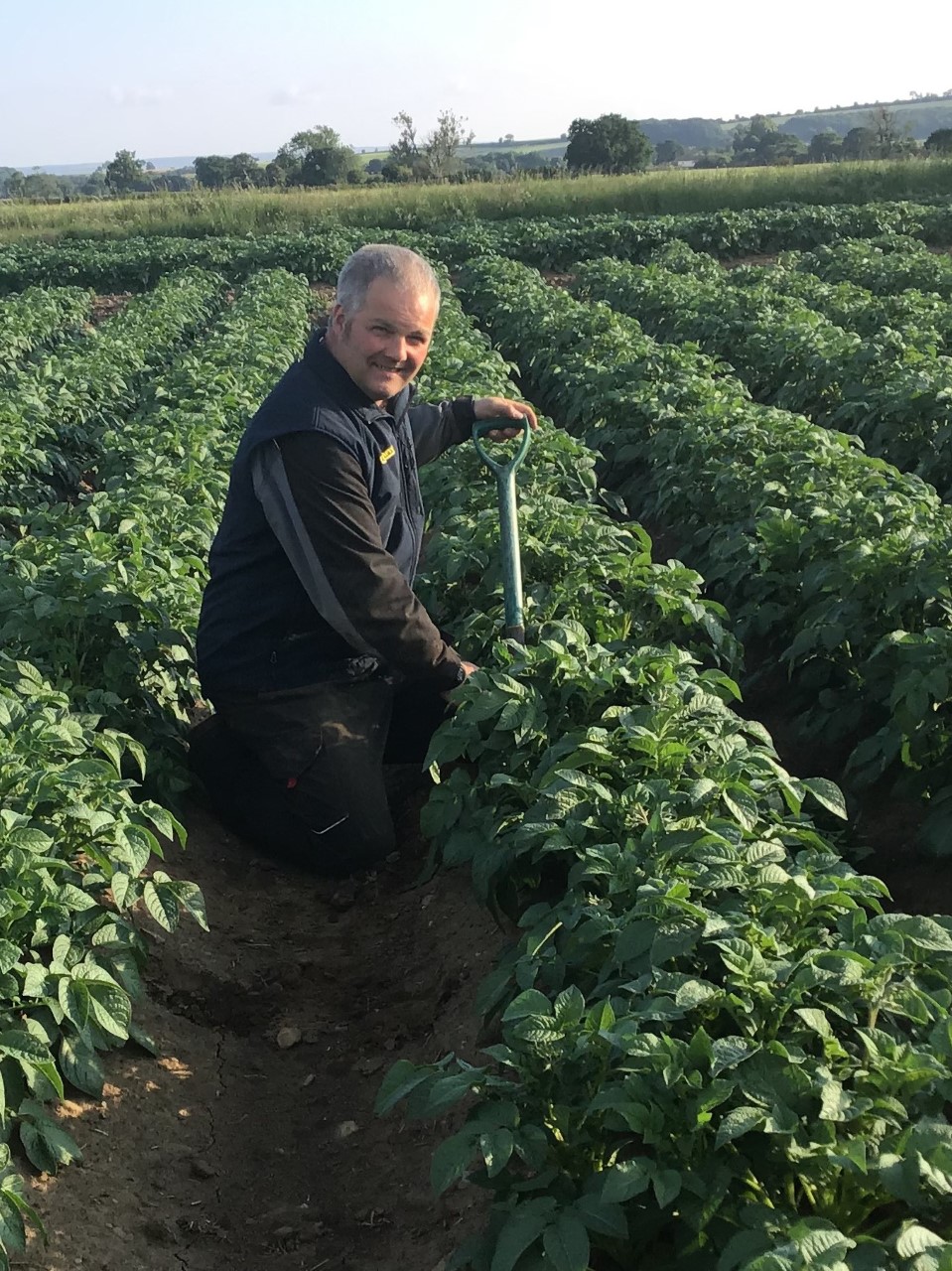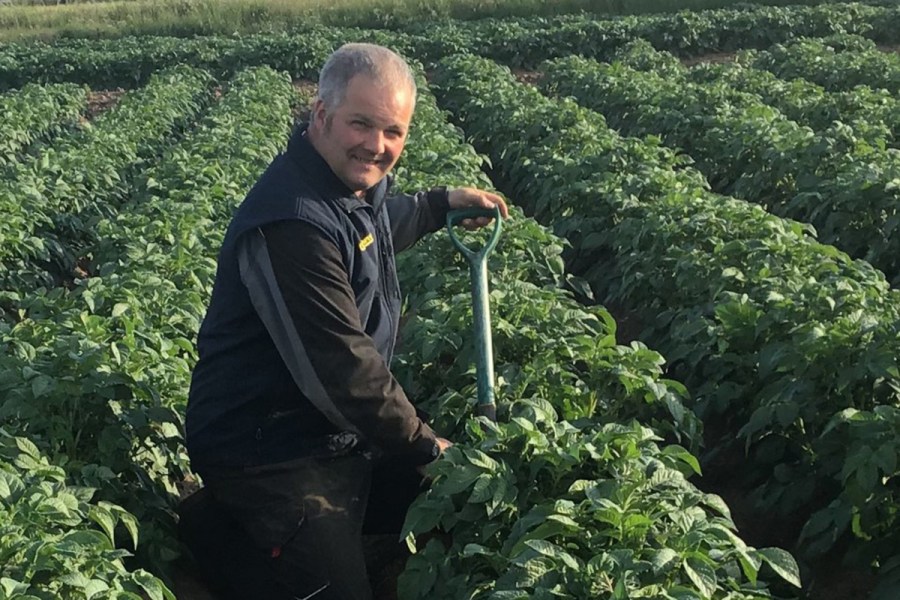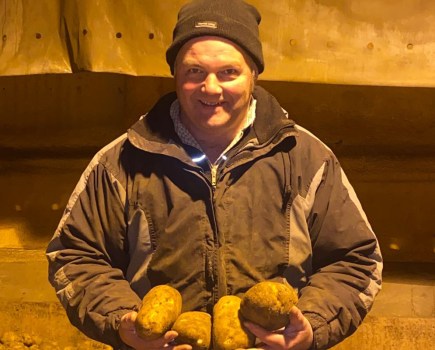 This month I’d like to open my column by sharing some sad news and paying tribute to a much-valued member of my team.
This month I’d like to open my column by sharing some sad news and paying tribute to a much-valued member of my team.
On Saturday 16 April, we were all serviced up, planning for a Sunday off and ready to plant potatoes on Monday morning. Unfortunately, Malc, at the age of only 36, suffered a massive heart attack at home on the Sunday and died in hospital on Monday 18 April.
Malc was a very versatile, committed and skilled operator, but also a mechanic and a colleague with vision, passion and a will to always do things better. He was essentially my right-hand man.
To say it knocked us all sideways is an understatement. Somehow, we gathered ourselves and made a rather dark and sombre start to the season. Adjustments had to be made to keep the wheels turning and various people went out of their way to help us out – the farming community is a tremendous place, never more so when the chips are down, for which I am very grateful.
This meant that our beet lifting contractor stepped in to get my sugar beet drilled, and my planned strip till and placed biological trial got shelved for this year. Instead, we’re looking at alternative ways of feeding the crop, through nitrogen enhancing and foliar nutrition to boost yield and sugar content. As far north as I am (97miles from Newark Factory), the future of beet here once again hangs in the balance. While £27/t is a useful step up from last year’s price, we need that to stand still, not move forward. Hopefully we’ll know more about the 2023 crop’s fortunes by the time the combines start rolling. We’re constantly tweaking, but there’s a limit to how much more cost can be shaved off before we go backwards.
My little regenerative potato trial last year has been expanded to a couple of acres this season. With some industry support, we’re following the basic regen principles of moving less soil and using less chemistry. I don’t think we can avoid putting a share in the ground to harvest the crop, but it needn’t be as deep as maybe it’s been in the past. Fundamentally, we need to produce a crop that our customers can use, and that all starts with soil health. Like many, most of my crop is grown on land rented in as part of other farms’ rotation, and as such I have control of it only for one year.
Since 2011, over winter cover crops, usually of radish, mustard, oats and beans have helped massively in reducing both nematodes and cultivations. We aim to incorporate the physical OM so that it stays in the planted row, to reduce capping, cracking, and slumping.
This year we’ve experimented with different cultivations, shallower depths, and various different ways to produce a seedbed. Chemical use will be much less than standard, with various alternatives trialled. Following the lessons of last year’s inaugural trial, some (different) companion crops will be planted, and we’ll try some straw cover again.
The interesting bit, outside the obvious yield and quality, will be comparing EIQ ratings of the different approaches, and dissecting the financial results to identify where the greatest margin was produced in an attempt to get us fit for the future, whatever that may hold.
Volatility presently is about the only constant – be it prices, disappearing tools from our armoury, weather, or market requirements. Costs are rocketing, and with it, risk. As I alluded to back in March, root crops are a big part of our family business, but as passionate as I am about them, we do need significantly more reward for the blood, sweat and toil that goes into producing, storing, and delivering our crops to our customers.
As contract growers, we’re notoriously price takers not price makers, mostly to reduce the risk of two consecutively poor years. Not too many years ago, by June we had an idea of forward prices and could commit to land and sometimes fertiliser for the forthcoming season in the July. In recent years the crispers and chippers have manged to drag this out until virtually Christmas. Most have some form of indexation model, set to give us just enough to keep us planting – with eternal farmer optimism – for another year.
I can’t say what’s happened in the past hasn’t worked, but the world is a very different place now. The UK potato industry needs action and fast, or processing companies might just find out that while they need a few spuds to slice to run a chip or crisp factory, we, the grower base, can manage to farm without the big hours, big outlay, big commitment, or big risk of producing the humble potato.
Regen or not, recent events like I mentioned at the start tweak one’s perspective – we value our team greatly. Our business, and I feel the British root industry at large is approaching a crossroads of sorts – which way will we turn?
Andrew Wilson is a fourth-generation tenant of the Castle Howard Estate in North Yorkshire.
He has a strategic approach to direct drilling on his varied soil types and grows a wide variety of crops. He’s passionate about the potato industry and having been utilising cover crops to reduce cultivation and chemical use since 2011, dipped his toe in the water of regenerative potatoes in 2021.




